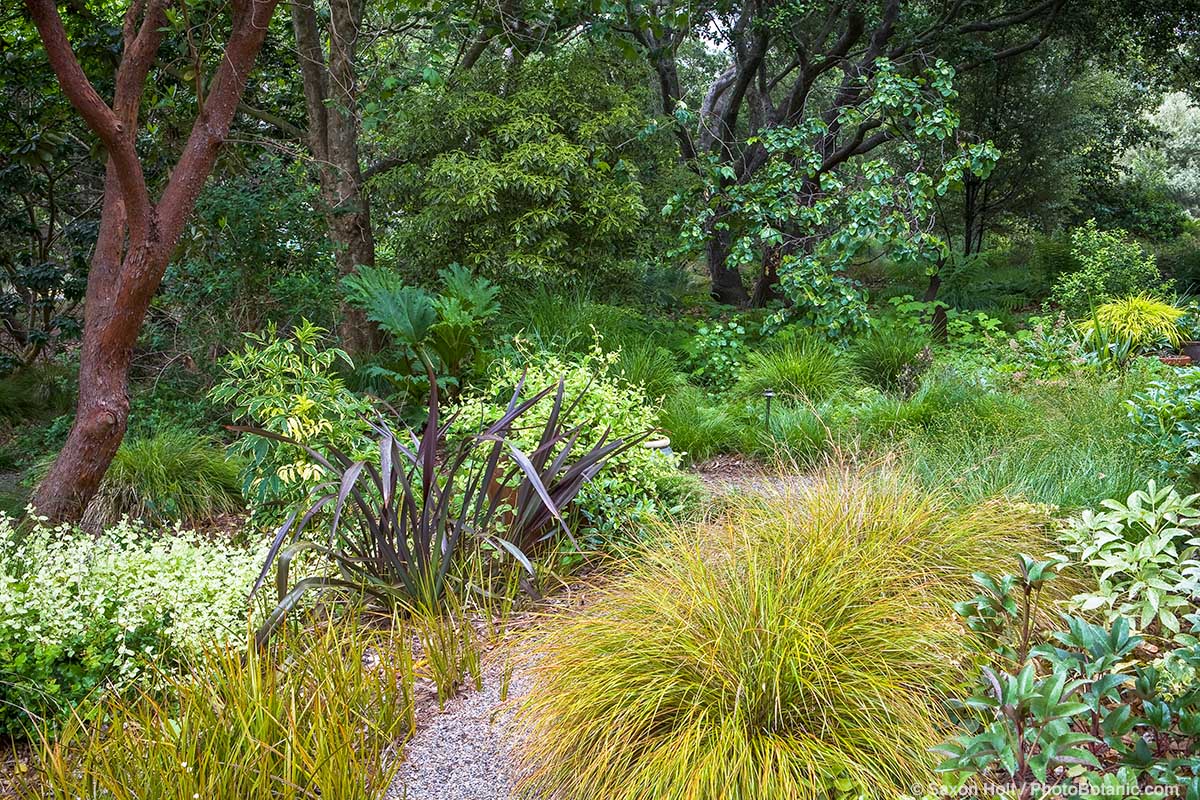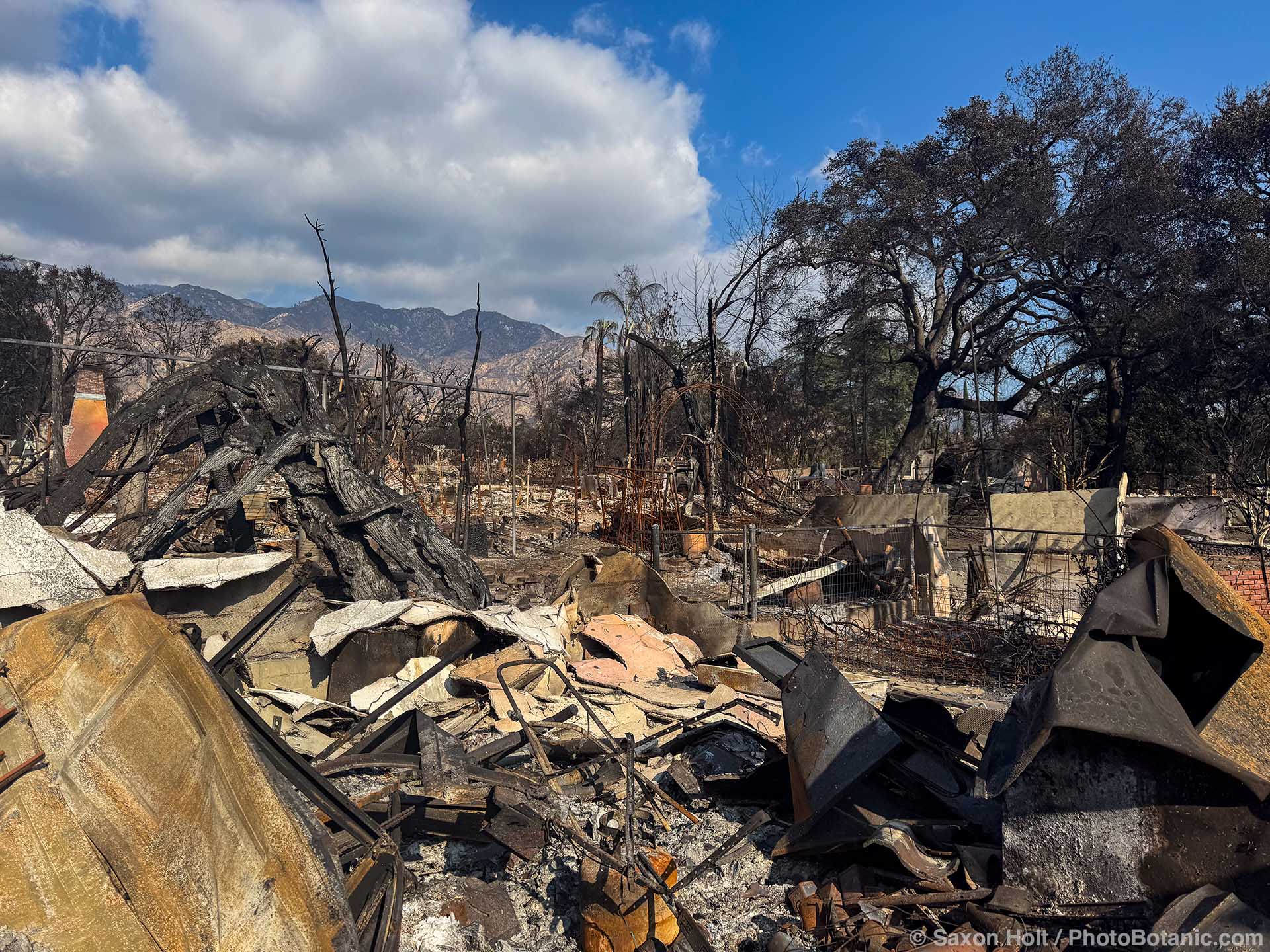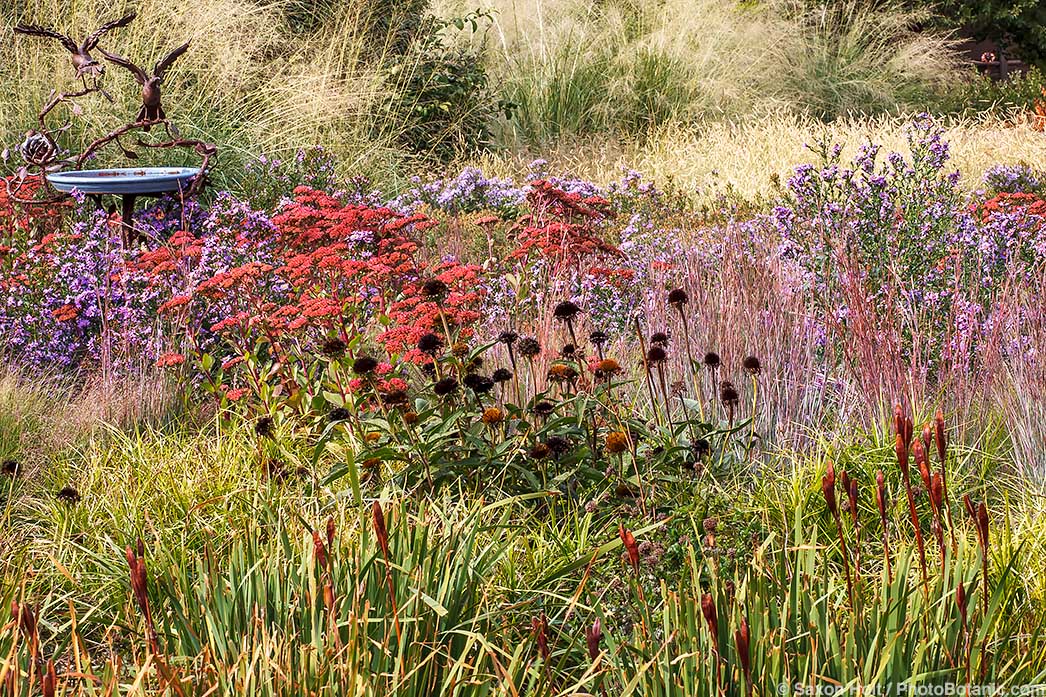The Carbon Capture Garden

Share This!
Carbon capture is widely viewed as a promising means of slowing global warming by reducing levels of atmospheric carbon dioxide, one of a number of gases responsible for trapping heat and warming the earth’s surface. Carbon dioxide produced by industrial processes can be captured at its source and injected underground. Atmospheric carbon dioxide is naturally taken up by plants, which transform the gas into a form that can be stabilized and stored in soil.

Carbon capture is maximized by a diverse planting of deeply rooted trees, shrubs, and perennials, minimally pruned, with no pesticides and soil left undisturbed as much as possible.
There is still much to be learned about how carbon is stored in soil, especially long term. Also unknown is the extent to which plants, even on the grand scale of global forestry and agriculture, can help with carbon sequestration. The science to date does suggest, if only hypothetically, that both release and capture of atmospheric carbon can be influenced by the actions of farmers, foresters, ranchers, and gardeners in managing vegetated land.
The idea of the carbon capture garden is an outgrowth of regenerative agriculture, which seeks to improve productivity not through the application of ever more fertilizers but by promoting and maintaining the health of the soil. Some of the ways soil health is fostered are reduced or no tilling or digging, restrained use of fertilizers, no use of pesticides, and prevention of erosion and soil compaction. For agricultural soils, which are regularly harvested and replanted, annual application of organic matter to the soil surface is also considered important.
Disturbing the soil, especially through mechanized tilling, disrupts soil aggregates, which are the basis of healthy soil structure. Aggregates can be preserved by avoiding digging and turning, especially when soil is too wet or too dry, and by mulching the soil to protect it from compaction by heavy rains. Disturbing the soil also releases carbon into the air through enhanced decomposition and directly or indirectly destroys soil microorganisms that contribute both to carbon release and to carbon storage. Pesticides kill soil organisms outright, and fertilizers, if overapplied, can reduce organism numbers and diversity.
The carbon capture garden is designed and managed in ways that support soil microorganisms, maintain and improve soil structure, minimize carbon loss, and maximize carbon capture with a diverse array of deeply rooted trees, shrubs, and perennials. Perhaps not coincidentally, such a garden is also an environmentally friendly garden that thrives without pesticides and fertilizers and with minimal trips to the landfill.
Combating climate warming may seem an ambitious charge to lay on the suburban front yard or shopping center parking lot, but millions of such plots of vegetated land add up to an immense acreage and a prodigious source of positive change. If the same energy and enthusiasm can be tapped for carbon capture as was directed at water conservation over the past forty years, there is just no telling what might be accomplished.
(Excerpted from Gardening in Summer-Dry Climates]
Share This!
Related Articles
By: Saxon Holt
By: Nora Harlow
By: Nora Harlow





